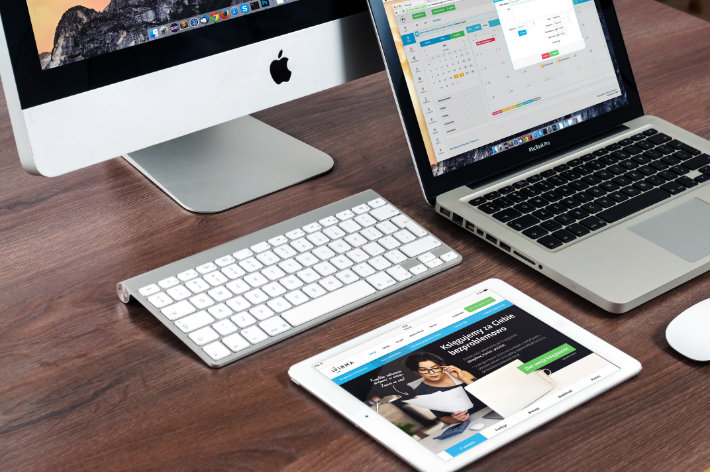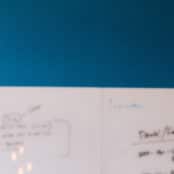
Web designers are often thought of as the creatives who sit behind three giant monitors with headphones on typing rows and rows of complicated code or mocking up wireframes and designing layouts. And while you are certainly expected to know how to create beautiful design through back-end systems, today’s gurus should know a few other things to be more valuable, personable, and adaptable.
Famed Italian designer Massimo Vignelli once said that “good design is a language, not a style,” which rings true now more than ever considering the rapid pace at which the web is growing. A good web design is one that feels seamless for the user and intuitively acts on how he or she will likely interact with the site.
“Good design is a language, not a style. – Massimo Vignelli ”
Obviously, the typical skills that are associated with being a web designer are important, but it takes more than that to create a great design. Here are five crucial skills all web designers should have.
1. A deep understanding of the end user
“Know your audience” is a saying that has been around for many moons. It usually has to do with public speaking, but it also applies to designing and developing sites – which, when you think about it, is kind of like the digital form of giving a speech.
“As a web designer, one of the most important skills you need to have at this stage in the game is a clear understanding of how the user will best interact with your interface,” – Caitlin VanderKlok, a freelance Digital Art Director in the midwest
This mostly applies to responsive design, meaning that the website reacts differently based on if the visitors are accessing the site on their mobile phones or tablets rather than their desktops. “As a designer,” VanderKlok says, “It’s important to keep in mind how that interaction will change between devices.”
So how do you get to know your end user? It’s not like you get to take each person who accesses your site out for coffee. Here are few tips:
- Research: Attach Google Analytics to your site and consult the results to help decipher your target market and their behaviors.
- User surveys: Create and issue these to a random test-market of people who visit your site. Ensure that they take no longer than 60 seconds to fill out.
- Customer interviews: Hold a dedicated focus group and allow them to interact with your site. Study their behaviors and ask them questions about their experience.
By doing the above, you can validate the assumptions you make about your users’ personas.
2. The chops for maximum customization
Customization is also key for today’s web users. Designing something that allows users the freedom of filtering options, specific search capabilities, or even dynamic skins (things like Google’s Gmail weather skin, which changes throughout the day based on the weather in your area) can make a website feel more personal and interactive to users.
In addition to being able to tailor the site for end users, there are customizations that are key for the client as well. For example, being able to create an eCommerce tool and sell products is something that sounds incredibly simple, but is a tall order when you think about what it takes to build a smooth and secure shopping experience.
While WordPress has a wide variety of plugins for a wide variety of purposes, a client may need functionalities that are unique or not considered mainstream. Therefore, developing a custom WordPress plugin is actually what is required. A custom WordPress plugin allows you to achieve a specific outcome without having to completely change the core programming. But before you begin to create a custom plugin, however, do a quick check to make sure another user with a similar need didn’t already create one.
3. An ego-less approach
Believe it or not, leaving your ego at the door is a skill – and a hard one to acquire – for many people. “You are not your work, and your work is not you,” says Claude Piche, designer at Digital Telepathy, a user-experience agency in San Diego. “If you don’t want people to provide feedback on your work, become an artist.” Piche’s point is that professional web designers must be prepared and open for criticism, judgment, and revisions to their work. This is a lot easier said than done for creative-minded people who take immense pride in their projects.
Responding in an ego-less manner doesn’t always come naturally to everyone. Here are a few tips on how to keep your composure so that you can uncover the perfect solution for the client:
- Respond, don’t react. If you’re feeling “in the red zone,” chances are you are reacting and not responding. Responding is the calm, healthy, and professional way to digest feedback. Reacting is a form of being defensive, which doesn’t help move the relationship or project forward.
- Pause for a breath. If you are on the phone or in person and the client is expecting an immediate response to their feedback, consciously take a deep breath and give yourself five seconds to reset before firing off the first thought.
- Get up and take a walk. If client feedback has come in the form of an email or voicemail and you have the luxury of time to respond, use that time wisely. Get up, away from your space, and take a walk to clear your head before addressing the client. This will help put the whole thing in perspective and remember not to take their critique as a personal attack.
4. Collaboration
“Ninety-eight percent of our job is collaborating with others,” adds Piche. Being able to work with others to brainstorm and tackle problems with a group approach can be a difficult skill to learn, but incredibly important in today’s workforce where creatives aren’t just people – they are entire departments.
Even though freelancers may work more independently, there is still an expectation that they collaborate successfully when duty calls for it. For example, a client may work with a web designer as the main point of contact, but then also request copywriting services. The web designer would need to find a copywriter, bring that person up to speed on the project, and help manage the workflow and end product.
5. Client, time, and expectation management
Finally, even though you may not always be the primary client-facing associate, it’s important that you learn how to manage your workload and set expectations for internal and external members of the project.
The creative workload can feel like a catch-all, especially if requests change daily. What may start as just a simple ask from the client could turn into a laundry list of to-dos. If you don’t stay organized with the project, billable hours could exceed what the client is willing to pay for, revisions could be missed, and the scope of the project can become blurred. All of this can lead to delayed timelines and dissatisfied customers.
Trello is a great tool that helps create taskboards online. You can put items into various lists depending on what stage of completion they are in. You can then share your board with others so they can see what you are working on, when it is expected to be completed, and even add subsequent tasks right to your list so nothing falls through the cracks.
These are the skills that today’s web designers should make sure they have in order to grow, evolve, and stay organized in the industry. What do you think is missing from the list? What skill will you learn next?










Comments ( 0 )